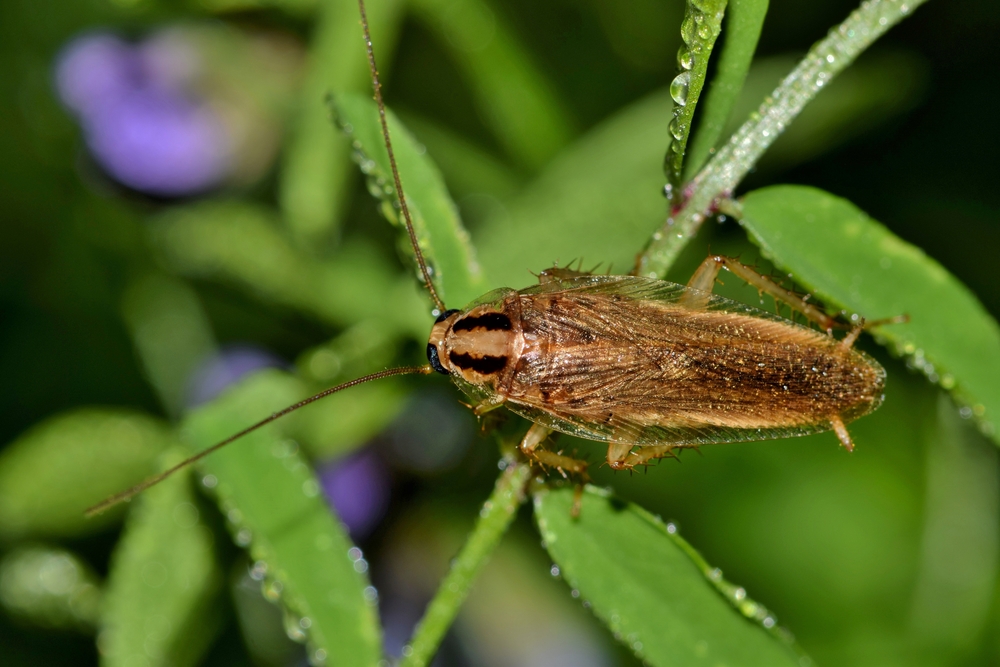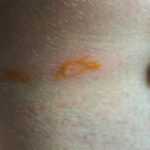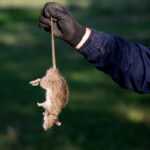German Roaches: Effective Tips for Control and Prevention
Dealing with German roaches? This guide will help you identify them, understand their habits, and implement effective control and prevention methods.
- German cockroaches are highly adaptable pests that thrive in clean and humid environments, making sanitation critical for their control.
- Understanding the cockroach life cycle, particularly the egg and nymph stages, is essential for effective population management and implementing targeted control measures.
- Challenges such as pesticide resistance and behavioral adaptations complicate control efforts, emphasizing the need for a combination of sanitation, baits, and professional pest control services.
Understanding German Roaches
German cockroaches, scientifically known as german cockroach blattella germanica, are among the most common and troublesome pests found in human dwellings. These small insects are notorious for their rapid reproduction and adaptability, making them a formidable foe in the battle against a german cockroach infestation for a pest-free environment.
The German cockroach typically plagues multifamily dwellings, such as apartment complexes and similar structures, making it a significant concern in these environments.
People associate cockroach infestation with poor hygiene, but the truth is that these pests can invade even the cleanest homes and businesses. While there are other cockroach species, German cockroaches are more prevalent and problematic than other cockroaches in human dwellings. American cockroaches are another common species, but they are less prevalent in multifamily dwellings compared to German cockroaches. Understanding their physical characteristics and preferred habitats is the first step in managing German cockroach infestations effectively.
Physical Characteristics
Adult German cockroaches are relatively small, ranging from ½ to 5/8 inches (12 to 16 mm) in length. They are typically light brown to dark brown in color, with two distinct parallel bands running across their thorax. These bands are a key identifying feature, distinguishing them from other cockroach species.
Female German cockroaches tend to be darker than their male counterparts and have a more rounded body shape. Both sexes have wings, but females have wings that are covered by leathery outer wings (tegmina), which distinguishes them from males. They rarely use their wings for flight. Recognizing these physical traits aids in effective identification and control of German cockroaches.
Habitats
German cockroaches are highly adaptable and can be found in a variety of environments. They thrive in human dwellings, particularly in kitchens and bathrooms, where food and water sources are abundant. These areas provide the warmth and humidity that German cockroaches need to survive and reproduce.
Common places to monitor for the presence of German cockroaches include door moldings, kitchen cabinets, drawers, and the back of refrigerators. Cardboard boxes are a frequent hiding place and transportation medium for these pests, facilitating their spread into new environments. They are also commonly found in multifamily dwellings and structures throughout Florida, making urban pest management a critical component of controlling German cockroach infestations.
The presence of German cockroaches in an infested dwelling is often linked to sanitation issues and typically prompts action once the infestation affects residents’ comfort. Infested houses can experience health risks, such as food contamination and allergic reactions, as well as psychological and social impacts due to the ongoing presence of cockroaches.
Life Cycle and Reproduction
The life cycle of the German cockroach consists of three main stages: egg, nymph, and adult. These are the life stages typical of German cockroaches, which undergo incomplete metamorphosis. Understanding these stages is crucial in effectively controlling their populations. The complete life cycle spans around 100 days, with nymphs comprising roughly 80 percent of the growing population.
During the transition from egg to nymph, the process of instar nymphs emerging directly from the egg case (ootheca) marks the beginning of their development. Understanding the typical life stages of German cockroaches allows us to employ targeted control measures that disrupt reproduction and lower their numbers.
Egg Stage
Female German cockroaches carry their eggs in a protective casing known as an ootheca, which is the typical egg case of the German cockroach—purse-shaped and containing multiple eggs. These egg cases are often observed protruding from the female’s body until they are ready to hatch. This typical egg case usually holds around 35 to 40 eggs and is carried by the female until just before the eggs hatch. The egg hatches mark the beginning of the nymph stage, during which the developmental stages actively forages for food and water.
Targeting control measures at the egg stage helps prevent future infestations by addressing the problem early in the life cycle.
Nymph Stage
When the eggs hatch, German cockroach nymphs emerge. These nymphs are initially light brown in color and gradually darken as they mature. During their development, they undergo multiple molts, typically five to six times, before reaching adulthood. At room temperature, nymphs actively forage and develop into adults within a few weeks, making room temperature nymphs a key factor in rapid population growth.
The nymph stage is critical for population growth, as nymphs actively forage for food and can quickly increase the number of adult cockroaches. Control measures should focus on nymphs to disrupt the entire life cycle.
Adult Stage
Adult German cockroaches exhibit distinct physical differences between males and females. Males, including the adult male german cockroach, are slender and tapered, while females are wider and more rounded. An adult female german cockroach can produce 200-250 eggs in her lifetime, significantly contributing to the rapid growth of infestations.
The adult stage is the final and reproductive stage of the life cycle. Knowing the reproductive capacity and lifespan of adult German cockroaches helps in implementing effective control measures to reduce their populations.
Diet and Feeding Habits
German cockroaches are omnivorous, meaning they consume a wide variety of foods. Their diet primarily consists of carbohydrates and proteins, which are commonly found in human food. Their omnivorous diet allows them to adapt easily to various food sources.
German cockroaches are known for eating table scraps and other available food debris, which contributes to their adaptability.
Understanding their feeding habits is crucial for effective control, as it influences their survival and reproduction. German cockroaches may also feed on food residues found on sleeping humans, posing additional health and hygiene risks.
Food Sources in Homes
In homes, German cockroaches are attracted to a variety of food sources, including bread, sugar, pet food, and food residues. They are often found in kitchens and bathrooms, where warmth and humidity are abundant. Sanitation measures such as keeping kitchens clean, eliminating food and water sources, and removing clutter are critical in controlling German cockroach populations.
Removing food sources in homes is a vital step to prevent infestations and control German cockroaches effectively.
Food Sources in Businesses
In commercial settings, food spillage and improper disposal of food waste are significant contributors to German cockroach infestations. Businesses must be vigilant in managing food waste and ensuring proper sanitation to prevent infestations and maintain hygiene.
Addressing food sources in homes and businesses reduces the risk of infestations and enhances pest management. Effective pest management strategies should be implemented in every home or business to prevent German cockroach infestations.
Health Risks Associated with German Roaches
German cockroaches pose various health risks, including food contamination and allergic reactions. They can german cockroaches adulterate food and surfaces with harmful bacteria such as Salmonella and E. coli, which can lead to foodborne illnesses. Additionally, their presence can trigger allergic reactions and exacerbate asthma symptoms, particularly in sensitive individuals. German cockroach allergens can also trigger asthma attacks, especially in children.
People associate cockroach infestations with unsanitary conditions, which often leads to strong reactions and a desire for immediate eradication.
German cockroaches can harbor pathogenic organisms and transmit parasitic worms, increasing the risk of disease.
Recognizing these health risks highlights the importance of controlling German cockroach infestations to maintain a healthy living environment. However, frequent insecticide spray treatments to control cockroaches may pose potential health risks due to insecticide residues.
Disease Transmission
German cockroaches can spread pathogens through their droppings and direct contact with surfaces. They harbor bacteria and viruses on their bodies, transferring these pathogens to food and surfaces that humans come into contact with.
Understanding disease transmission mechanisms enables us to implement control measures that reduce health risks from German cockroach infestations.
Allergies and Asthma
Exposure to German cockroach allergens can worsen asthma symptoms and trigger severe allergic responses. The allergens are primarily found in their feces and cast-off skins, with chitin being the primary protein responsible for allergic reactions. Health issues associated with exposure to chitin include dermatitis, itching, swelling of eyelids, runny nose, rashes, and potential asthma development.
In addition to physical health effects, German cockroach infestations can cause human psychological stress, including anxiety and embarrassment. Infestations alters human behavior, often causing individuals to avoid certain areas or activities due to the stigma and discomfort associated with cockroaches.
Highlighting these health risks underscores the necessity of effective German cockroach control and prevention measures.
Challenges in Controlling German Roaches
Controlling German cockroaches presents several challenges due to their high reproductive capacity and adaptability. A single pair of German cockroaches can produce up to 10,000 descendants in a year under optimal conditions. This rapid reproduction occurs because German cockroaches breed continuously, making it difficult to manage infestations effectively. Monitoring infestation population size is essential for effective control, as it helps determine the best strategies for reducing their numbers.
Additionally, German cockroaches have developed resistance to multiple classes of insecticides, complicating control efforts. Recognizing these challenges is important for devising effective strategies to control German cockroaches. In extremely heavy infestations, German cockroaches may even bite humans or feed on food residues on sleeping faces.
Pesticide Resistance
German cockroaches have shown broad resistance to most major classes of insecticides, particularly in California populations. Understanding the specific insecticide class is important when selecting effective treatment products for German cockroach control, as resistance can vary between classes such as pyrethroids and others. An insect growth regulator is another chemical option used to disrupt the development of German cockroaches and is often included in integrated pest management strategies. The phenomenon of cross-resistance allows resistant cockroaches to survive specific insecticides and gain resistance to others they haven’t encountered. Despite this, abamectin remains effective against German cockroaches due to its unique mechanism of action.
Tackling pesticide resistance is crucial for creating effective pest control strategies and minimizing future infestation risks.
Behavioral Adaptations
German cockroaches exhibit behaviors that enable them to evade traps and baits, complicating pest control efforts. Their ability to adapt their behavior to avoid detection and control measures makes them a particularly challenging pest to manage, contributing to german cockroach survival.
Recognizing these behavioral adaptations is vital for formulating control strategies that mitigate the impact of German cockroach infestations on human health and well-being.
Effective Methods for Controlling German Roaches
Effective control of German cockroaches requires a combination of methods, including sanitation practices, the use of baits and traps, and professional pest control services. Implementing these strategies can significantly reduce cockroach populations and prevent future infestations. Using these methods is also essential to prevent German cockroaches from establishing infestations.
Sanitation Practices
Sanitation is the most effective method for controlling German cockroach populations. Proper food disposal, rigorous cleaning protocols, and clutter management are essential in eliminating food and water sources that attract cockroaches. After managing clutter, sealing cracks and crevices along countertops, baseboards, and behind appliances is essential to eliminate cockroach hiding spots and improve long-term control. Sealing or removing pet food at night can also help prevent infestations.
Good sanitation practices effectively deter German cockroaches and reduce their populations.
Use of Baits and Traps
Using baits and traps is an effective method for controlling German cockroach infestations. Sticky traps are useful for monitoring and detecting cockroach activity, helping to track infestation levels and guide control efforts. Low-toxicity, low-impact gel baits are particularly effective, as adult roaches pick up the bait and bring it back to their aggregation area. Follow-up treatments of bait should be applied every 2–4 weeks until no cockroaches are found.
Placing and regularly monitoring baits and traps is essential for sustainable roach control. For best results, place sticky traps in areas where cockroaches are likely to hide, such as behind appliances, inside cabinets, and near entry points.
Preventing Future Infestations
Preventing future German cockroach infestations requires a proactive approach, including regular maintenance and sealing entry points. These measures help create an environment that is less attractive to cockroaches and more difficult for them to invade.
Implementing these preventive strategies reduces the risk of future infestations, promoting a healthier living and working environment.
Sealing Entry Points
Sealing entry points is a critical step in preventing German cockroach infestations. Here are some effective methods to keep cockroaches from entering your home:
- Seal cracks and gaps using caulk.
- Seal small cracks, as German cockroaches can fit through tiny openings and use them as harborages.
- Install door sweeps to close gaps under doors.
- Regularly inspect packages and groceries to prevent cockroaches from hitching a ride.
Sealing potential entry points significantly reduces the risk of cockroach entry, helping maintain a pest-free environment. Additionally, cold temperatures below 59°F (15°C) hinder German cockroach survival and development, making it less likely for them to establish populations in cooler environments.
Regular Maintenance
Regular maintenance is essential for preventing German cockroach infestations. Here are some key practices to follow:
- Frequent cleaning of kitchen appliances
- Vacuuming regularly
- Reducing clutter to eliminate hiding places
- Identifying and addressing potential infestation issues through routine cleaning and inspections
- Using commercially available household cleaners to remove food residues and reduce cockroach attractants
By implementing these practices, you can help prevent severe infestations.
Keeping a clean and organized environment effectively deters German cockroaches and reduces the risk of future infestations.
Understanding the behavior, life cycle, and feeding habits of German cockroaches is crucial for effective control and prevention. These resilient pests pose significant health risks, including disease transmission and allergic reactions. By implementing a combination of sanitation practices, baits and traps, and professional pest control services, we can effectively manage and reduce German cockroach infestations.
Preventive measures, such as sealing entry points and regular maintenance, are essential for maintaining a pest-free environment. For homeowners and business owners seeking comprehensive pest control solutions, Gopher Patrol offers expert services to address even the most severe infestations. Take action today to protect your property and health from the dangers of German cockroaches.
Frequently Asked Questions
How can I identify a German cockroach infestation in my home?
To identify a German cockroach infestation, look for small, light to dark brown insects featuring two distinct dark parallel bands on their thorax. These insects are typically located in kitchens and bathrooms, and their presence in these areas is a strong indicator of an infestation.
What are the common food sources for German cockroaches in homes?
German cockroaches commonly feed on bread, sugar, pet food, and food residues found in kitchens. To effectively control their presence, it is essential to maintain cleanliness and eliminate potential food sources.
How do German cockroaches spread diseases?
German cockroaches spread diseases by harboring bacteria and viruses on their bodies, which can contaminate food and surfaces through their droppings and direct contact. This transmission poses a significant health risk to humans.
What challenges make controlling German cockroaches difficult?
Controlling German cockroaches is challenging due to their rapid reproductive rates and the ability to develop resistance to various insecticides. Additionally, their behavioral adaptations allow them to evade traps and baits effectively.
How can Gopher Patrol help with German cockroach infestations?
Gopher Patrol can effectively eliminate German cockroach infestations by utilizing expert pest control techniques and comprehensive solutions tailored for both residential and commercial properties. Their approach not only addresses current infestations but also helps prevent future occurrences.





